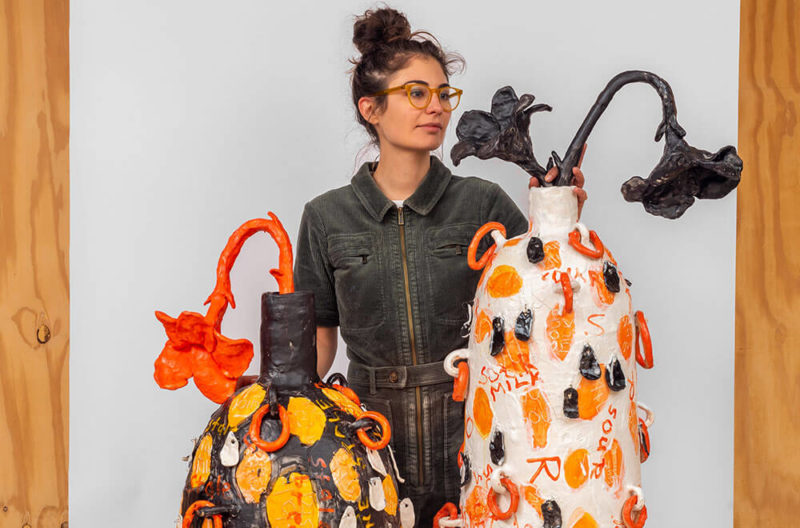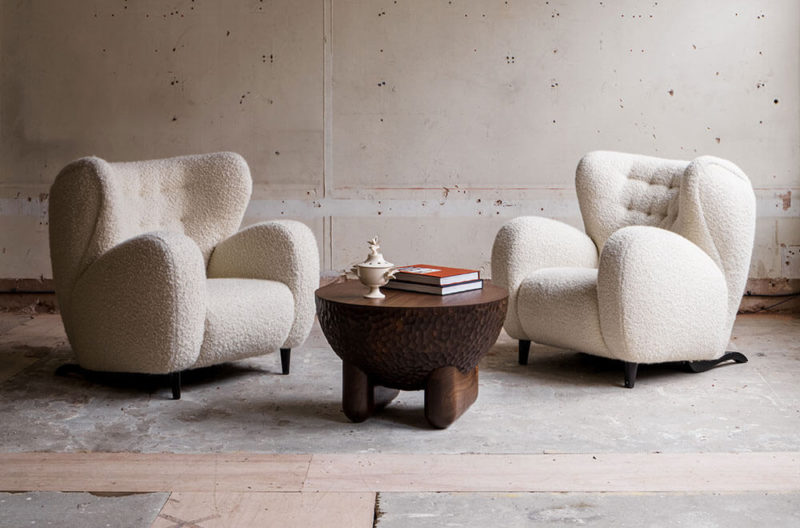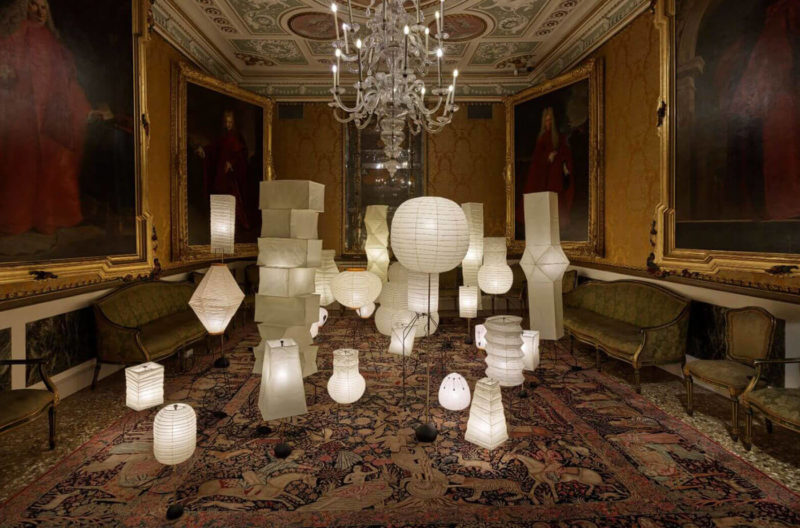COLLECTIBLE 2022 / Review
Anna Sansom reports back on new work from designers including Voznicki, Objects with Narratives, Thibault Huguet, Moure / Studio and Studio Roso.
Vanderborght Building, Brussels
20th-22nd May 2022
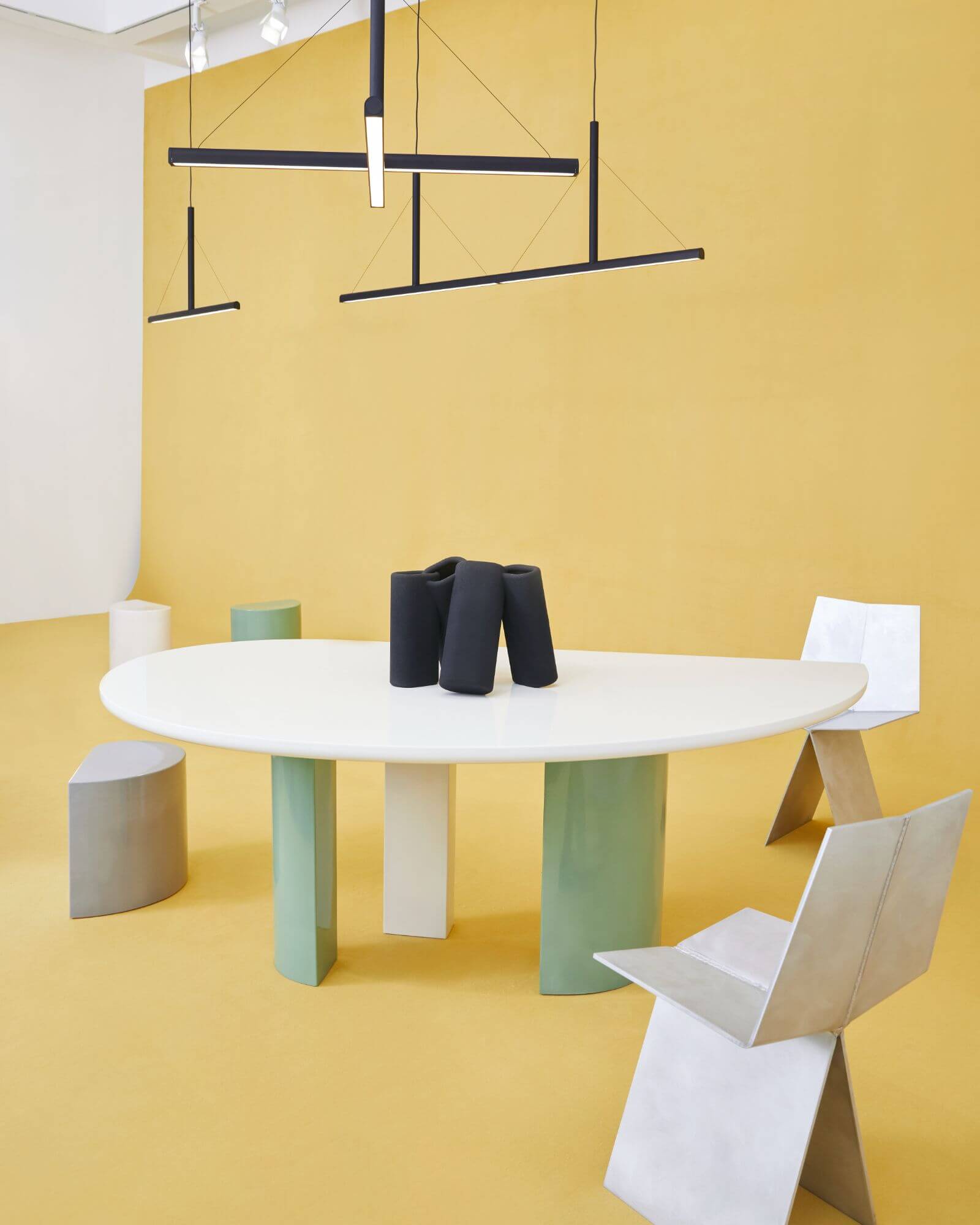
Therome Edition Collections,
COURTESY: Therome Edition Collections / PHOTOGRAPH: Valentin Fougeray
COLLECTIBLE DESIGN FAIR returned to the Vanderborght Building in Brussels with a panoply of cutting-edge contemporary design showcasing emerging talent.
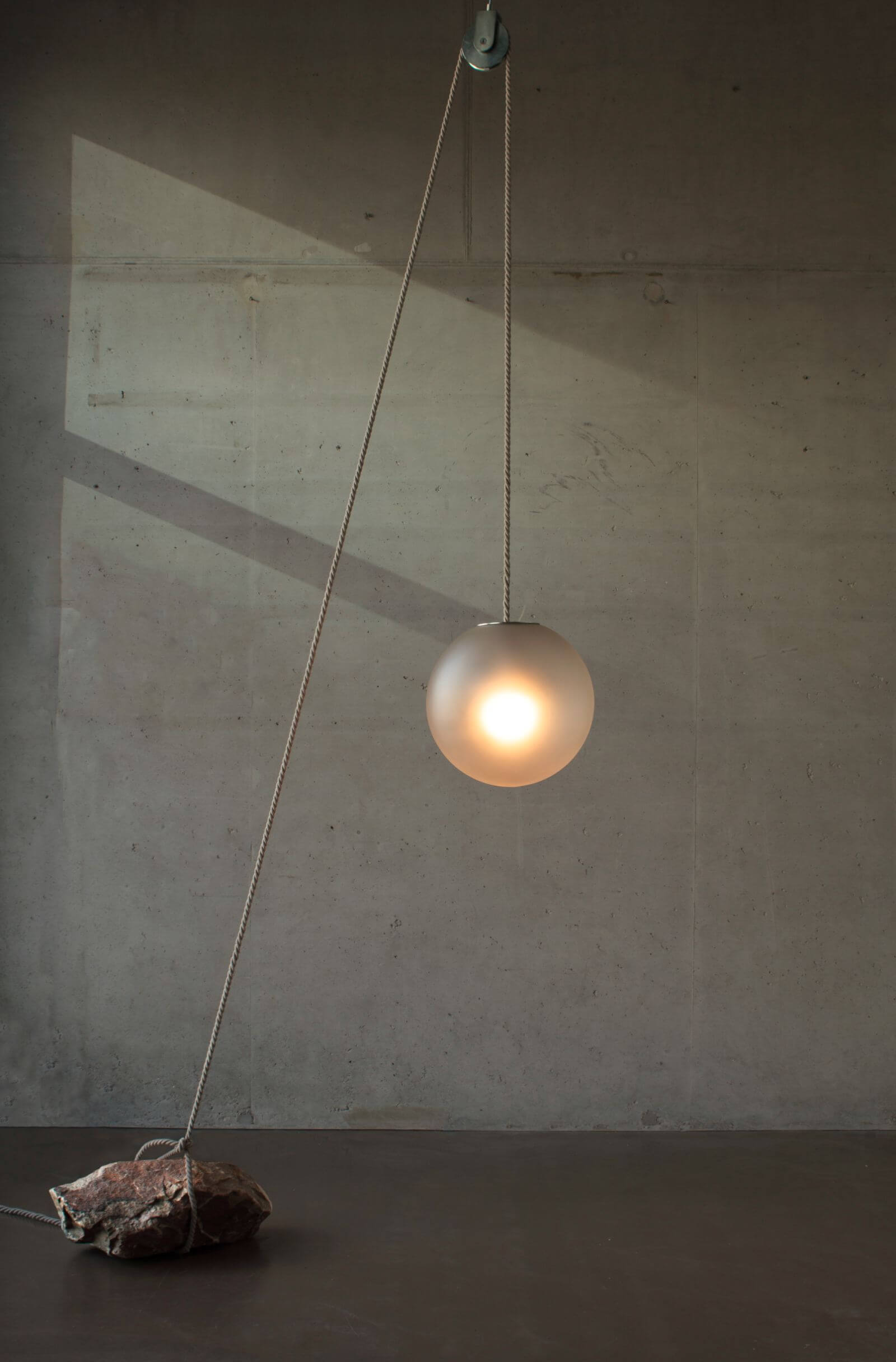
Jesse Visser, ‘Beacon Of Light’, 2020
COURTESY: Jesse Visser & Mia Karlova Galerie
This was the fourth physical edition of the fair as last year’s was cancelled at the last minute due to the pandemic, resulting in it being online only. After the two-year hiatus, COLLECTIBLE’s founders, Clélie Debehault and Liv Vaisberg, were thrilled to be back. “What was confirmed for us during the pandemic is that design is something that one needs to see in real life,” Debehault comments. “We’re not just a commercial platform; COLLECTIBLE is also about reuniting the whole contemporary design community. Everybody meets up here in the same building, it’s like going to summer camp.”
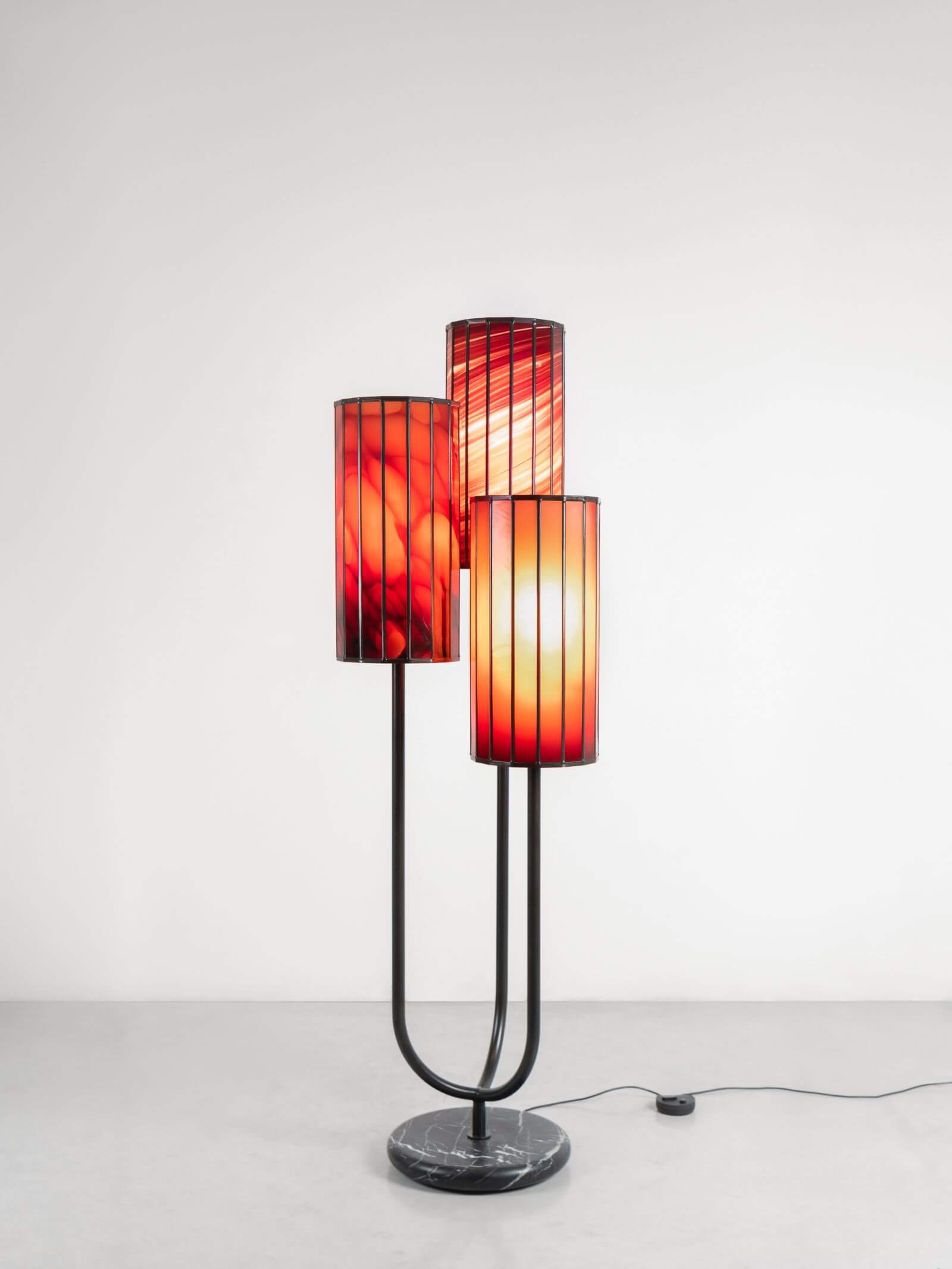
Maarten De Ceulaer, ‘Stained Glass Lights Collection’, 2022
COURTESY: Maarten De Ceulaer
Launched in 2018, the fair – spread over six floors – is known for inventing a new format where experimental design studios self-exhibit alongside galleries and curated exhibitions. This year, featuring around 125 exhibitors, it also featured a new section called THE EDITORS, dedicated to limited-edition design labels.
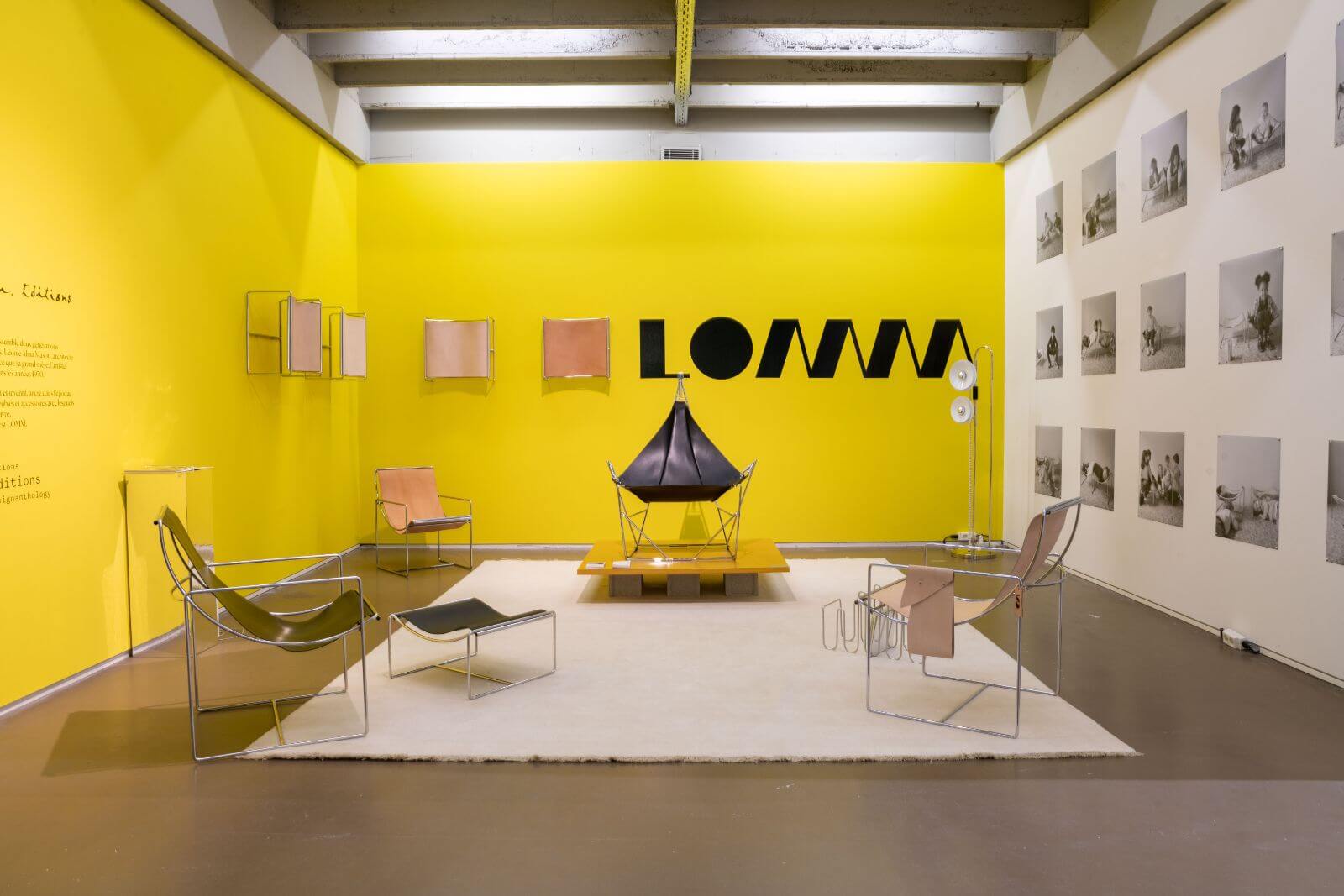
Installation view, LOMM Editions part of THE EDITORS
COURTESY: LOMM Editions / PHOTOGRAPH: Seppe Elewaut
“Previously we put THE EDITORS in the same section as the galleries but this year we decided to separate them,” Vaisberg says. “We wanted to highlight that THE EDITORS are doing a thorough job of accompanying designers to produce high-end projects.”
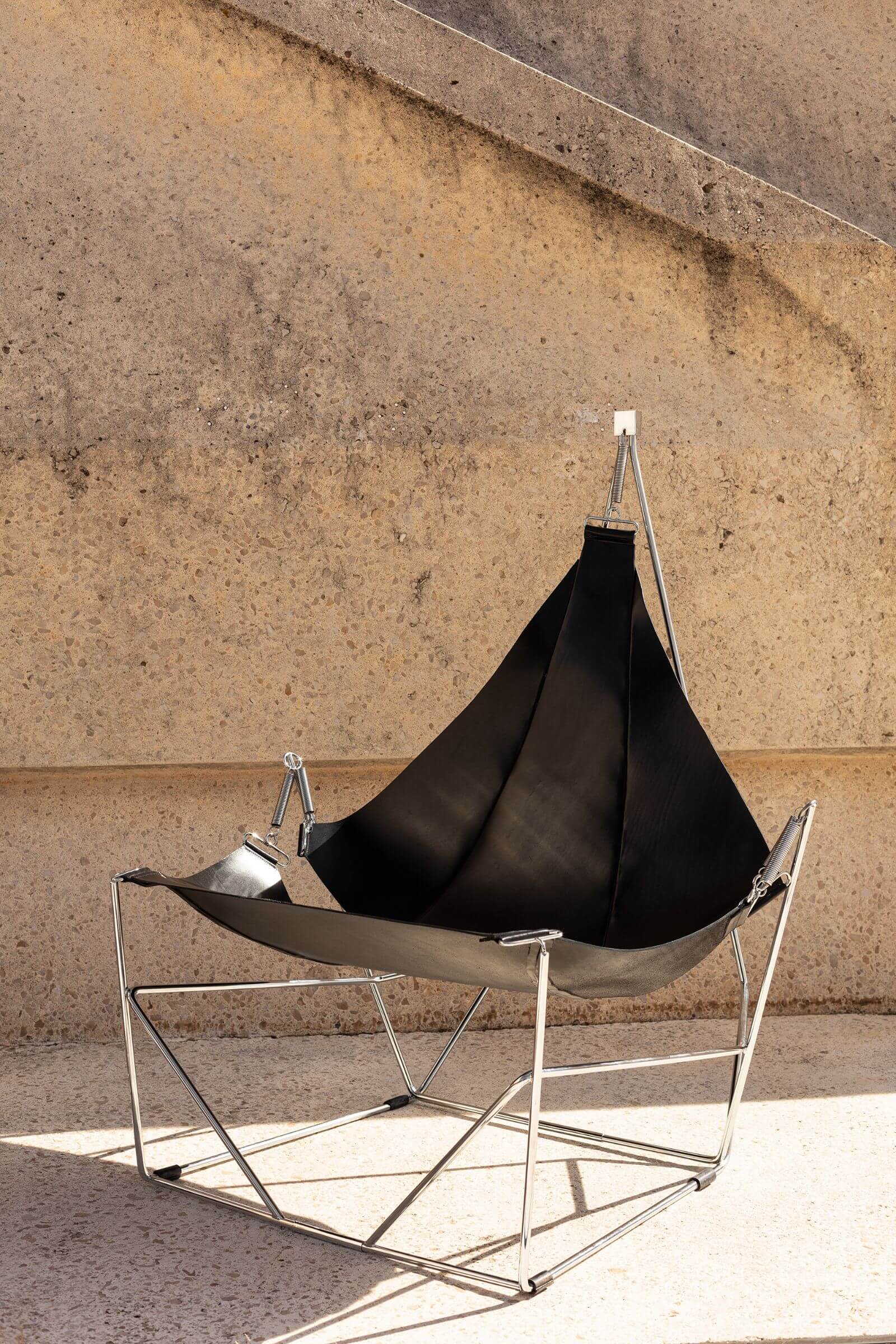
LOMM Editions, ‘Grand Fauteuil DAVID’, 2022
COURTESY: LOMM Editions
As the Fair bore out, the sense of community surpasses geopolitical issues such as the Russia-Ukraine war. Mia Karlova, a Russian-born interior designer who opened a gallery in Amsterdam last year, presented new ceramic vessels by Voznicki – a Ukrainian design duo, Andriy and Olesya Voznicki. “They reached out to me a month before the war, saying that what they do might interest me,” Karlova says. “Then the moment [the Russian invasion] happened, they travelled to be reunited with their son in Amsterdam and the first place they stayed was with me. Art is therapy for people who are forced to escape [a war zone].”
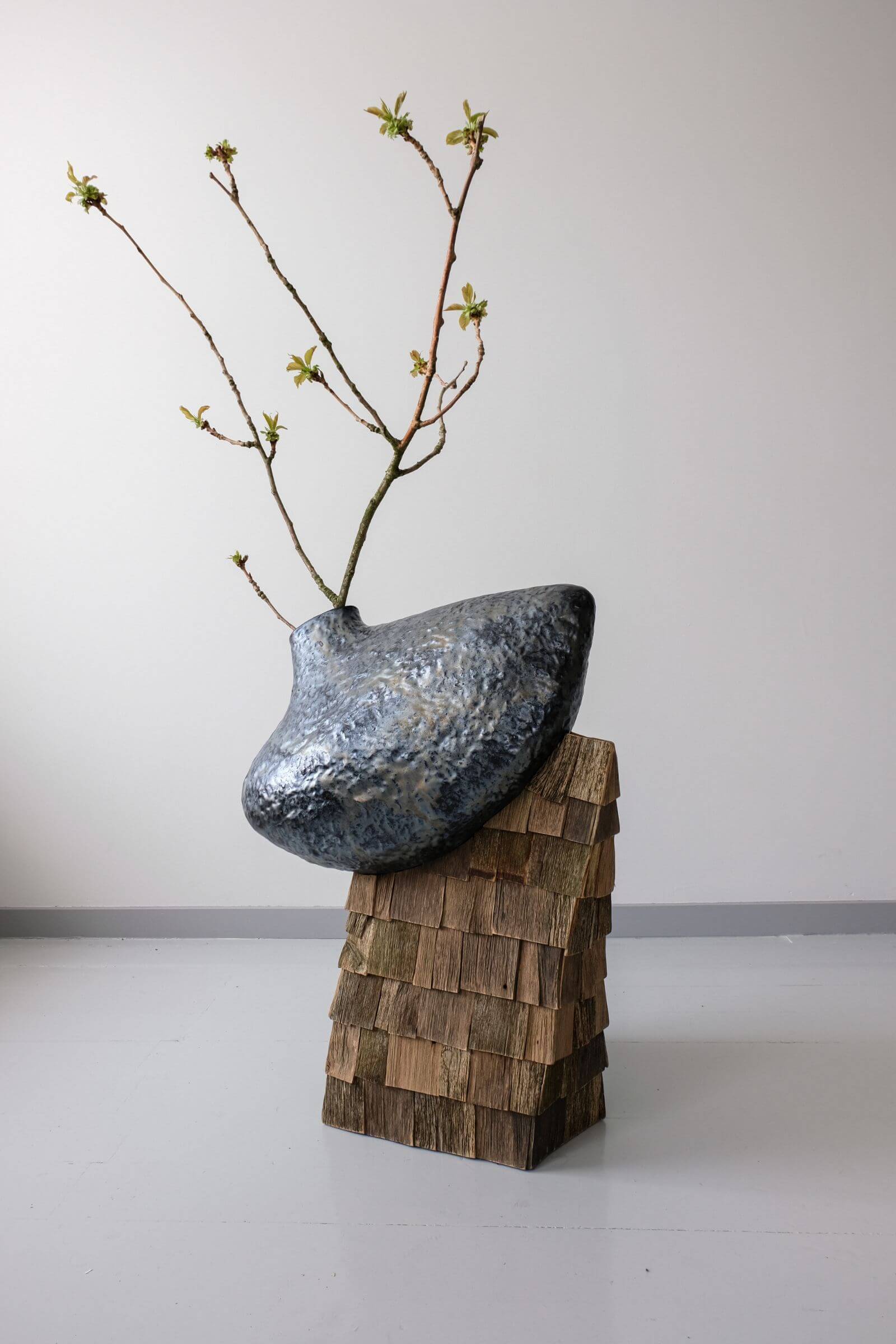
Voznicki at Mia Karlova
COURTESY: Voznicki & Mia Karlova Galerie
Among other first-time exhibitors in the main section were Objects with Narratives – a Belgian platform founded by brothers Robbe and Nik Vandewyngaerde along with Oskar Eryatmaz. Previously, the brothers were designers themselves. During the pandemic they decided to change direction in order to represent other young designers. “We were disappointed with the gallery system and so we stopped designing,” says Nik, adding, “We’ve tried to only invite designers to work with us that are fun.” The stand featured two multidisciplinary ‘surrealist fictions’, themed around day and night, the latter showcasing Lukas Cober’s electric-blue fibreglass console, Ward Wijnant’s wardrobe, Six N. Five’s marble chair, and Mira Sohlén’s tapestry.
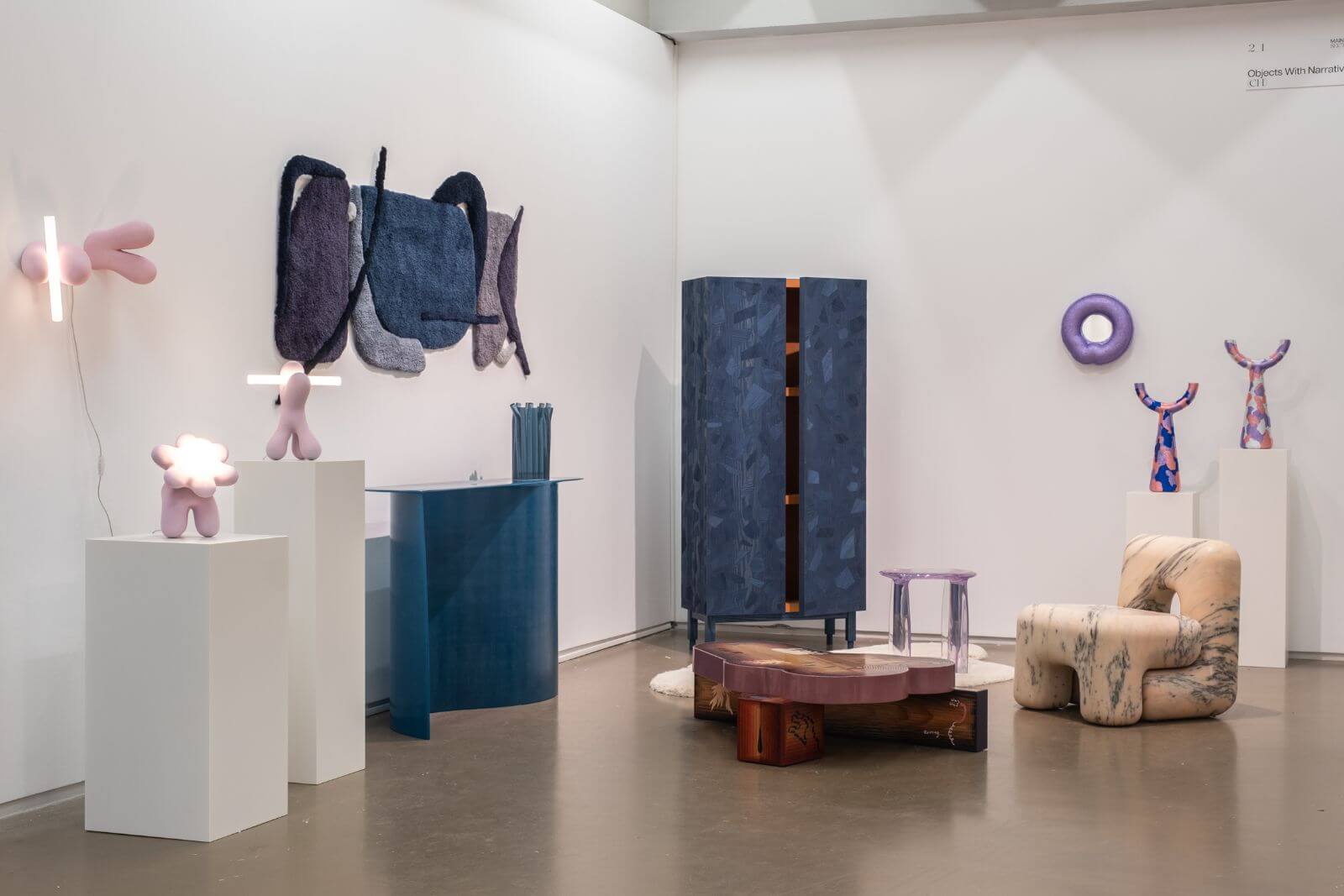
Installation view, Objects With Narratives
COURTESY: Objects With Narratives
Amidst a cascade of roses, adjacent exhibitor Tableau (Copenhagen) had a solo show of Laurids Gallée’s new geometric series of marquetry furniture. The forms follow a rigid grid system which contrasts with the laser-cut, hand-painted and lacquered elements such as flowers and animals – a radical reinterpretation of the art of marquetry. “As the grid is incredibly modern, it is suitable as a canvas onto which I can interweave organic elements that I design and draw by hand,” says the Austrian designer, who also drew inspiration from Japanese printmaking.
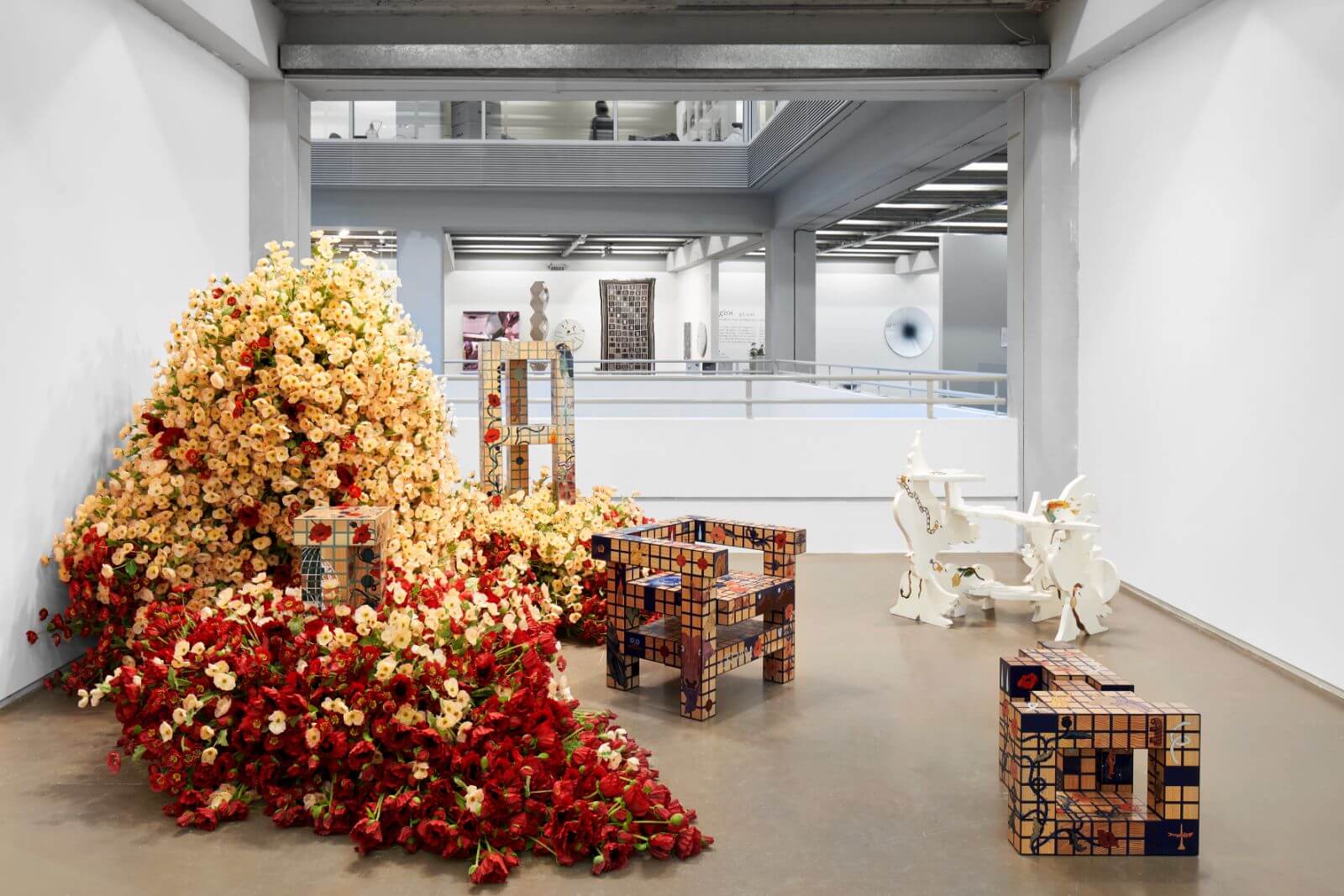
Installation view, Tableau
COURTESY: Tableau
On the next floor, THE EDITORS section demonstrated the increasing role that editors play today. French Cliché – founded by Emily Marant and Hugo Matha – pairs designers with craftspeople to produce limited-edition series. “We develop the project from start to finish, enabling artists to work with new media and techniques to make ‘functional art’,” says Marant, who displayed Atelier Baptiste & Jaïna’s vases with buoys and ropes, Arthur Ristor’s glass-mosaic objects and MANON DAVIET’s tapestry mirrors. “Unlike a gallery, we don’t represent the artists throughout their career but develop projects together. A lot of young designers are keen to find their own identity, like a fashion label.”
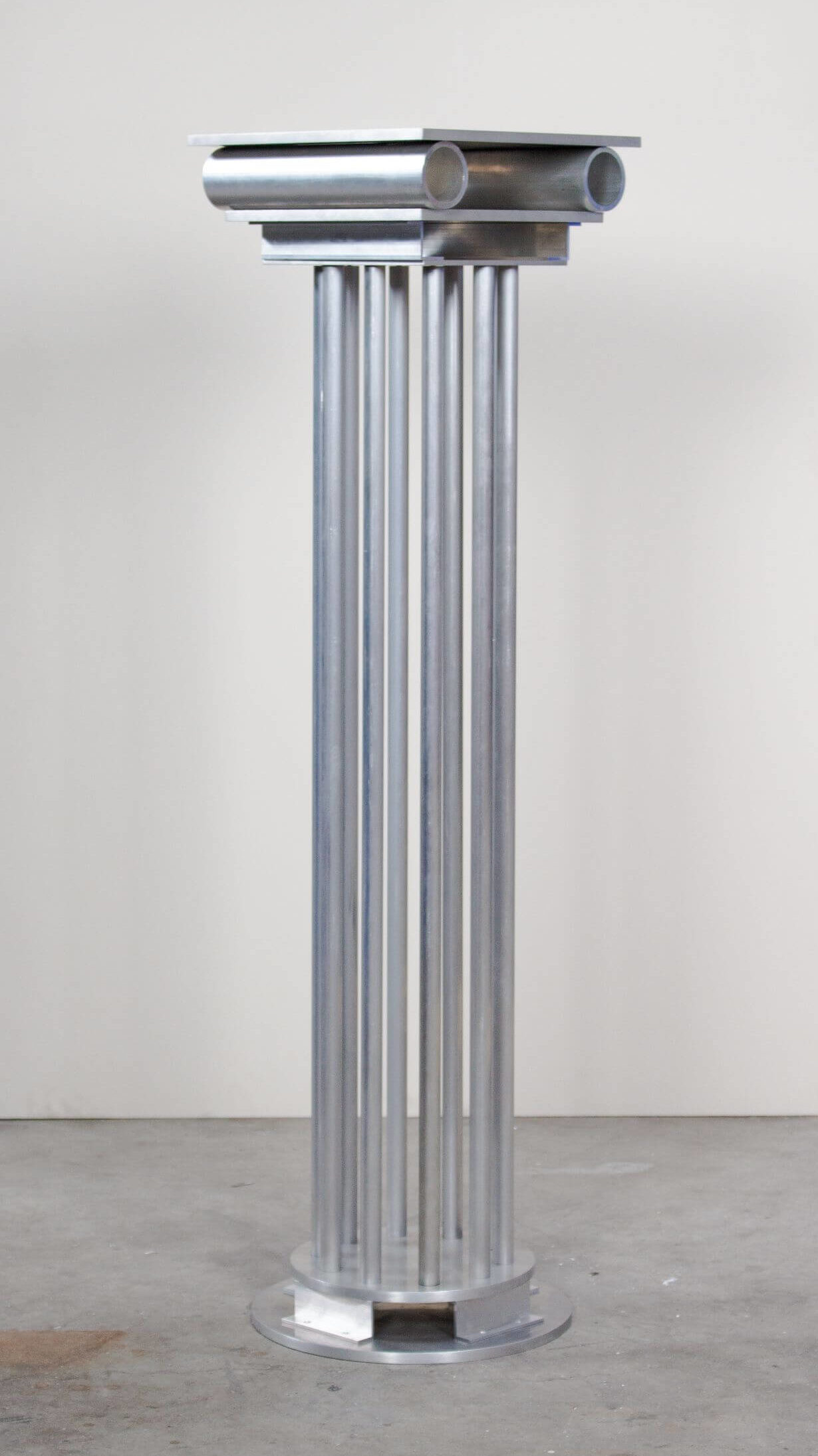
Studio Joachim – Morineau, ‘Tholos’ column/pedestal, 2020
COURTESY: Studio Joachim – Morineau
What’s exciting at COLLECTIBLE is how young designers can present their own work to the public. Leo Orta unveiled the first pieces that he has designed solo since the separation of design duo, OrtaMiklos (founded by Orta and Victor Miklos Andersen). “I was invited at the last minute,” Orta tells TDE. On view are a pair of humorous, wavy chairs in mauve and pale turquoise, ‘Pepper and Siri’ (2022), and a low table, ‘Smile from the Clouds’ with a hole on the surface so the user can reach for a book on the level below. “It’s about coming back to the emotion in objects; if something is very expressive, original and handmade, your connection with it can last longer.”
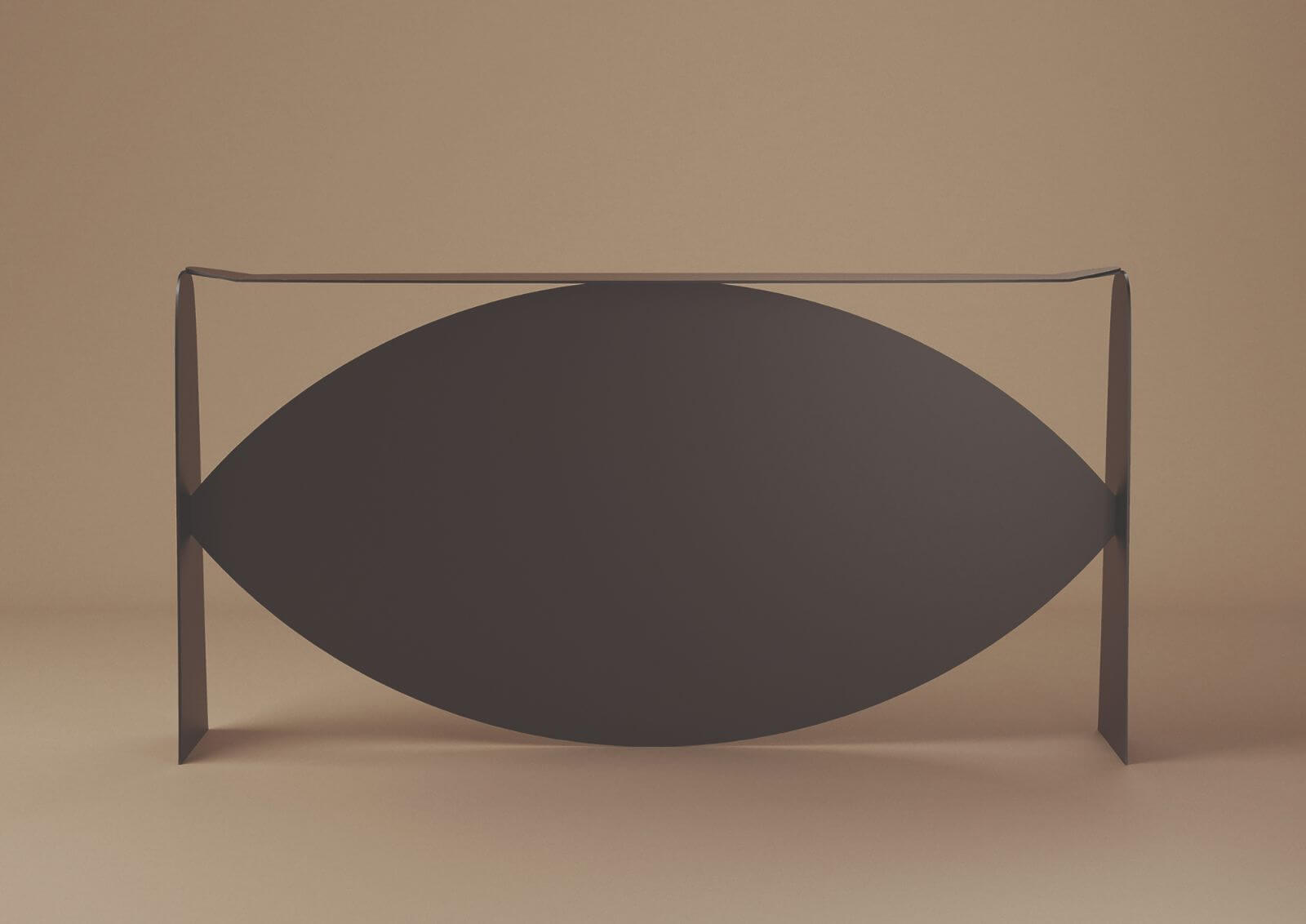
Thibault Huguet, ‘Plane’, 2021
COURTESY: © Thibault Huguet design studio
Thibault Huguet, showing sculpted furniture made in France such as an elegant ellipse-shaped table, was here because he wants to bypass the gallery system. “I want to have my own line, finance it myself and work with craftspeople and carpenters,” he reasons.

Thibault Huguet, ‘Stern’, 2021
COURTESY: © Thibault Huguet design studio
Indeed the displays of numerous studios expressed this desire to work with local materials in a sustainable way. Moure / Studio (founded by Ludivine Moure) collaborated with craftspeople in Auvergne to make an exquisite table entirely from volcanic stone and several layers of enamel. “I developed the colour specifically to represent how it’s inspired by the forest,” Moure says.
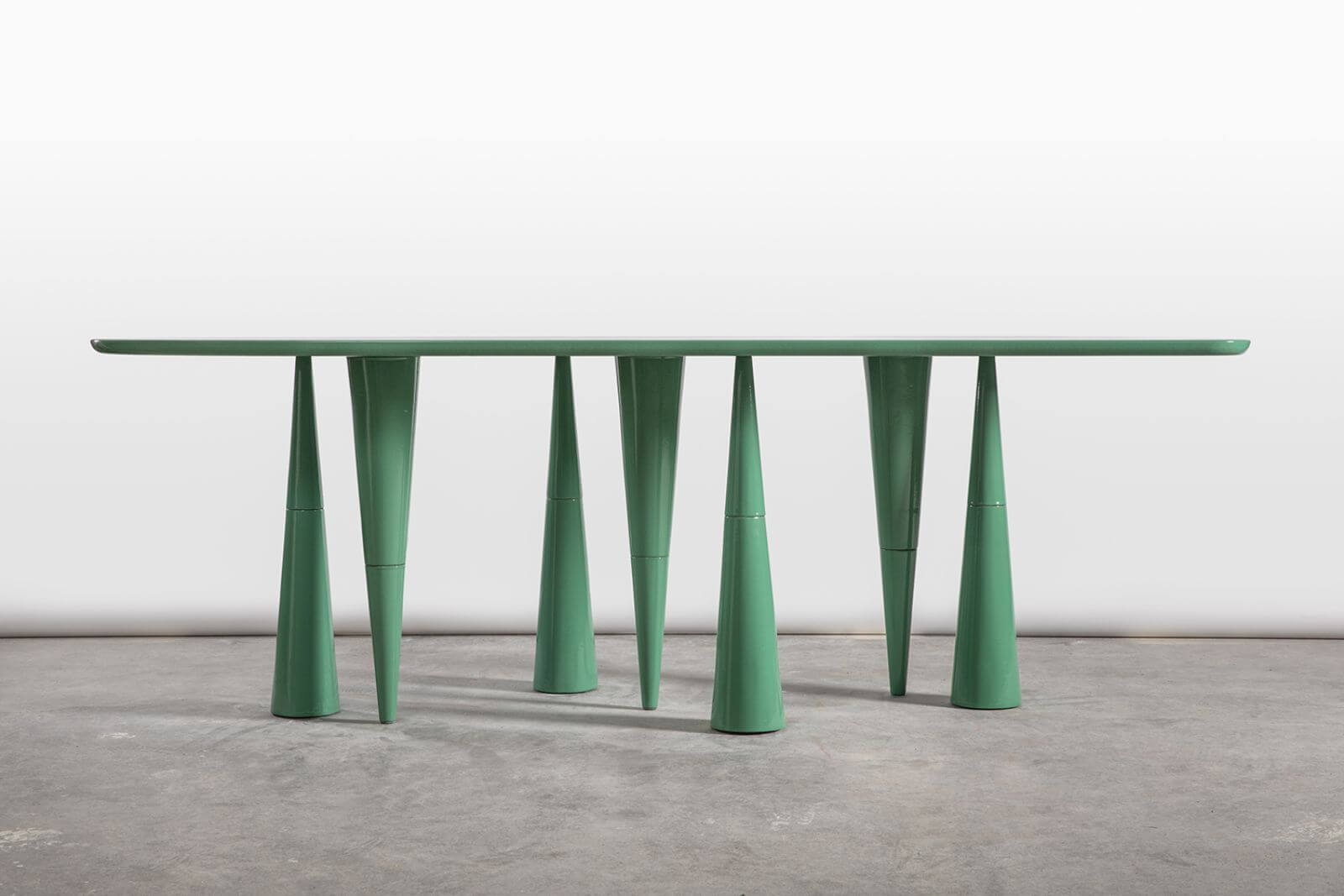
Moure / Studio, ‘Silvia’ table, 2021
COURTESY: Moure Studio / PHOTOGRAPH: ©Alexandra de Cossette
Meanwhile, Dimitrih Correa revitalised reclaimed wooden beams in Brazil to make a series of graphic lights revealing various stages of treating the wood. The first piece has a raw surface while the last is totally smooth. “Even if we have great fairs in Brazil, it’s an honour to be at COLLECTIBLE as it can give me more visibility to European and American markets,” enthuses Correa, who has flown over from Rio.
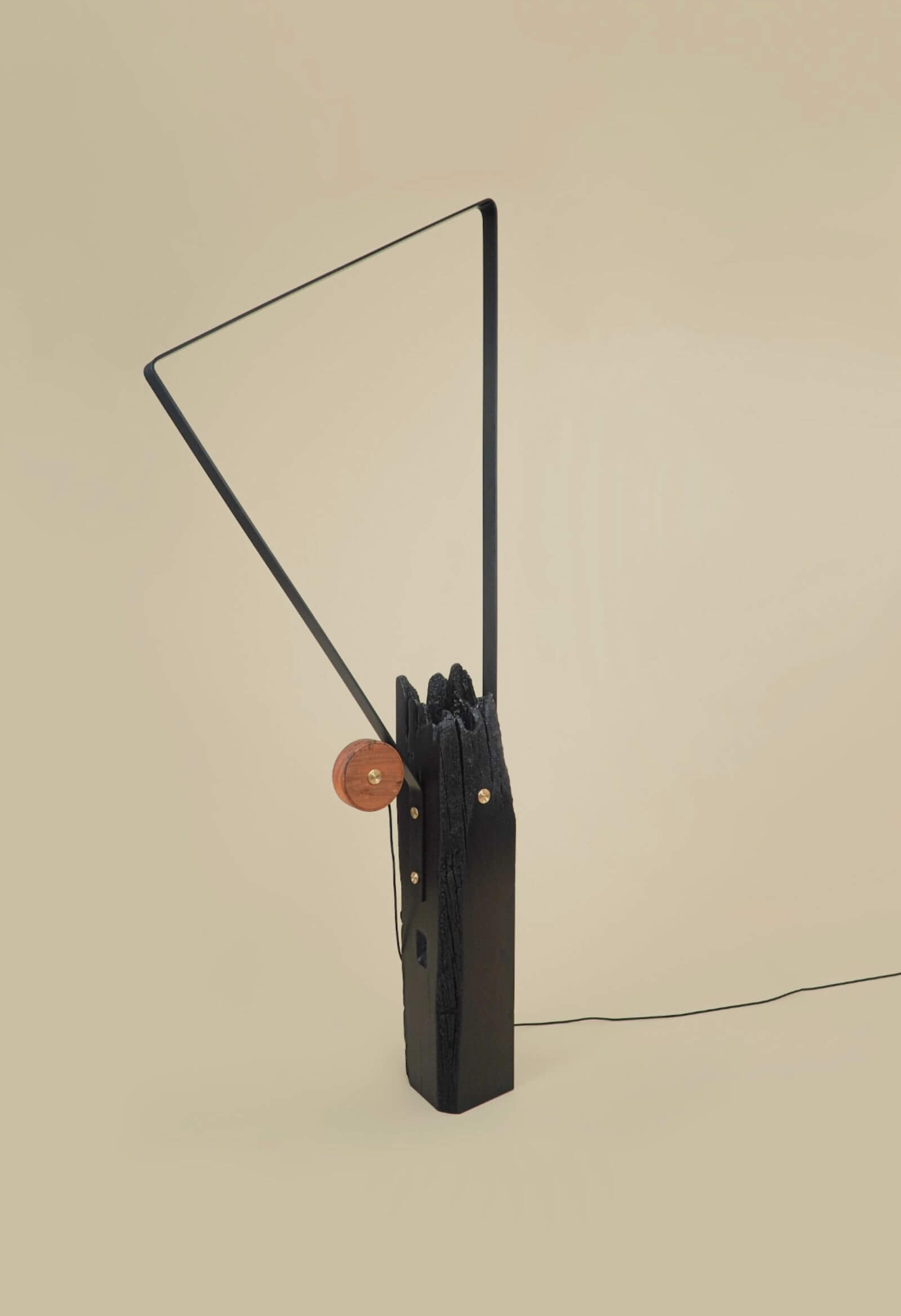
Dimitrih Correa, ‘Esquadro Floor Lamp’, 2022
COURTESY: Dimitrih Correa
Optical illusions were captured elsewhere. The kinetic effect of Studio Roso’s glass table made from yellow-and-blue circles loosely recalls artists such as Carlos Cruz-Diez while the lamps made with 3D-printed sand are designed to give the impression of the moon. “Our idea is to dissolve physical volumes,” explains Rolf Knudsen, who founded Studio Roso with Sophie Nielsen.
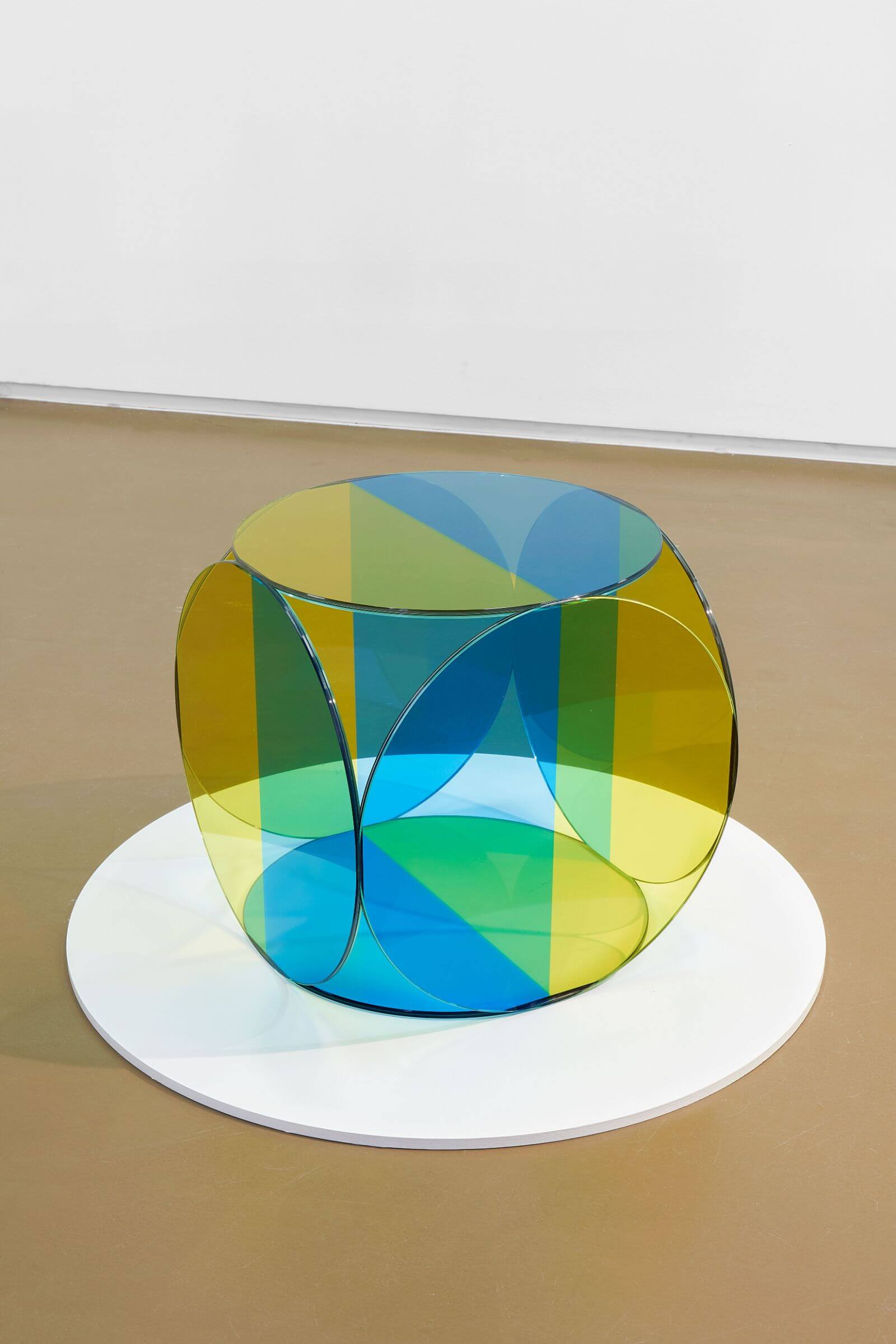
Studio Roso, ‘Cube Table 02’, 2022
COURTESY: Studio Roso
Other highlights included Lionel Jadot’s furniture made with old VHS movie tapes; Ben Storms’s new lights made with delicately bent strips of marble and steel, and Philipp Aduatz’s stunning, sculptural 3D-printed gradient furniture and vases.
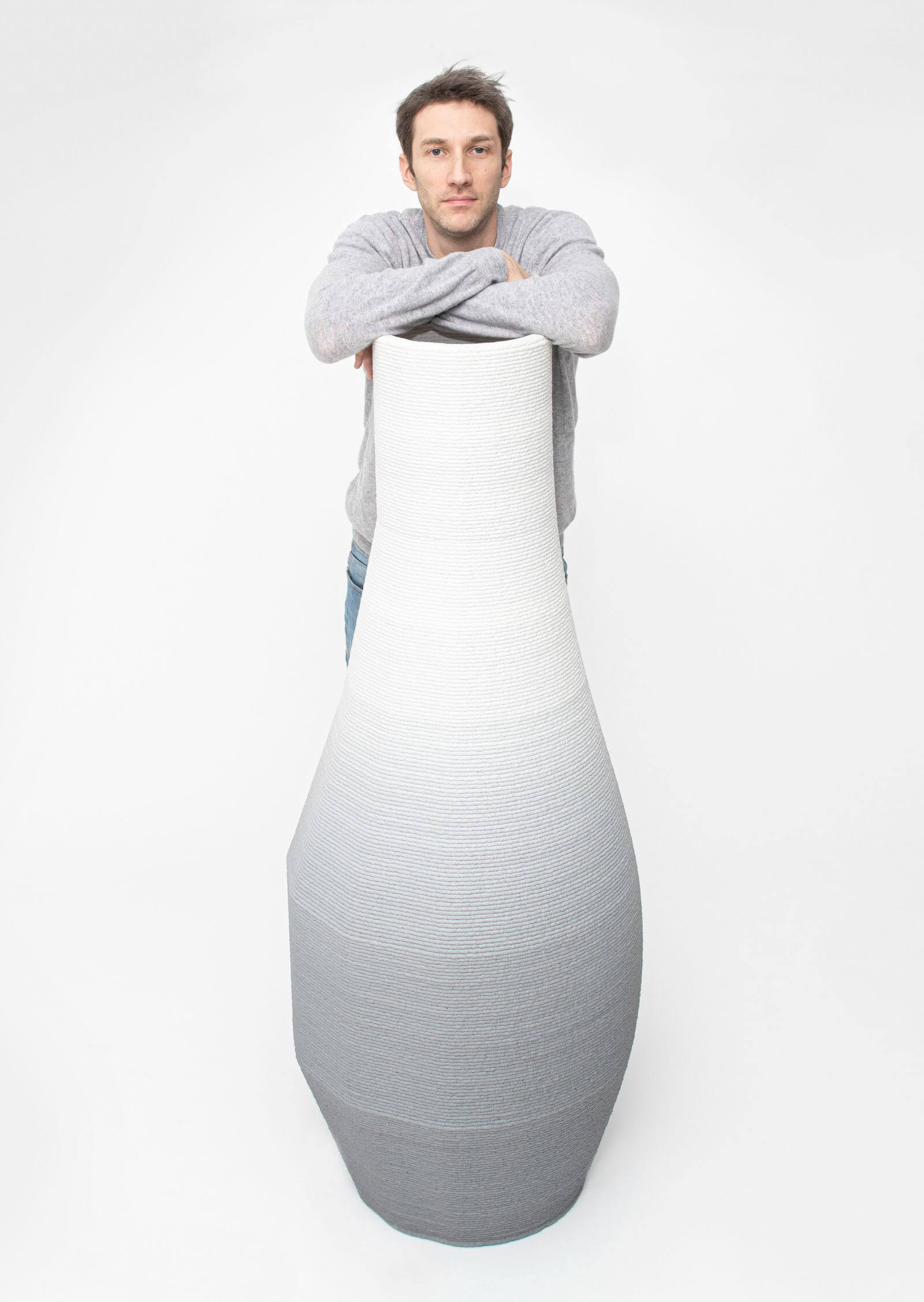
Philipp Aduatz, ‘Gradient Vase’, 2021
COURTESY: Philipp Aduatz




